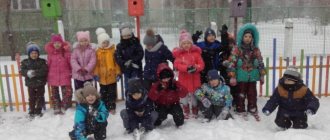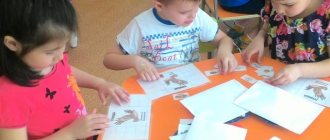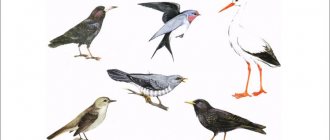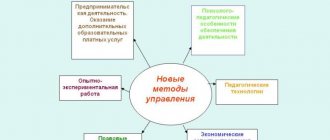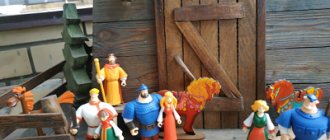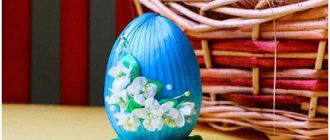In the process of research work on computer science “Cartoon with your own hands”, a 4th grade student was given the goal of learning more about the new genre of animation - computer animation, understanding how drawings “come to life” and trying to create her own cartoon.
More details about the work:
In a research paper on computer science, “Do-It-Yourself Cartoon,” the author describes the history of the appearance of animation, studies theoretical information about animation and animation, and studies the types of technologies that are used to create a cartoon.
In the proposed computer science project “Cartoon with your own hands,” the author sets tasks aimed at collecting information on the history of animation, studying different types of animation; familiarization with the main stages of creating cartoons; mastering some artistic techniques, modern technical means and computer programs necessary for creating animated films.
The results of this study can be useful as educational material, as well as for computer science lessons, classroom hours and leisure activities.
Table of contents
Introduction 1. From the history of animation 2. Technologies for creating animation 3. Working on a cartoon. 3.1 Analysis of the results of a survey about cartoons. 3.2 Creating a cartoon Conclusion References Appendices
Introduction
We live in an age of technological miracles. The computer occupies an important place in the life of a modern person.
One can argue for a long time about the benefits and harms of universal computerization, but one way or another, the computer has already become firmly entrenched in our lives - in the lives of the younger generation. Children watch films and cartoons, read books, write essays, communicate with friends, and play. All this using a computer!
My parents believe that this has a negative impact on the child. But on the other hand, you can’t do without computer literacy in the modern world! Then we decided to use the computer as a convenient tool for solving creative problems.
There is such a direction in Art - “computer graphics”. I was wondering, how are cartoons created in the genre of computer graphics?
My mother and my supervisor suggested that I get acquainted with the history of animation and find out what types of animation exist. I became interested and began to look for answers to these questions.
Object of study : animation as a special type of cinematic art.
Subject of research : the process of creating an animated film.
In my work I used the following methods :
- Studying literature.
- Watching videos.
- Study and analysis of the simplest animation technologies.
- Shooting your own cartoon.
- Analysis of the obtained result.
Goal : learn more about the new genre of animation - computer animation, understand how drawings “come to life” and try to create your own cartoon.
Tasks :
- collect information on the history of animation, study different types of animation;
- get acquainted with the main stages of creating cartoons;
- master some artistic techniques, modern technical means and computer programs necessary for creating animated films;
- summarize the results obtained.
Hypothesis : with accessible technical support, creating thematic animated films is accessible even to a child.
Research methods : studying literature on this topic, searching online resources, observation, comparison, practical work.
Relevance . Modern children can use a computer not only for games, but also as a tool for learning and solving creative problems. You can create cartoons, do web design, create your own music, digital painting and much more, depending on your personal interests. Thus, spend your free time profitably, diversify your leisure time and acquire a new hobby.
Stages of work on the project
- Collection and analysis of information (questioning of different age groups, studying literature, Internet resources)
- Generalization of the obtained data.
- Preparation for defense: studying software, creating a cartoon, etc.
- Defense (confirmation of the hypothesis).
Go to section: 2. History of animation
Project “Cartoons by children’s hands”
Project
"Cartoons by children's hands"
Educator:
Simonova Tatyana Ivanovna
Children's age: 4-5 years
Project type:
creative-cognitive, group
.
Project implementation period: long-term (2019-2020 academic year)
Contents of the OO Federal State Educational Standards for Education: cognitive and creative development.
Relevance of the project. Formulation of the problem.
From the experience of teachers of preschool educational institutions, it is well known that respect for the child’s personality, acceptance of his goals, requests, interests, creation of conditions for self-determination and self-realization actively develops creativity. Protected from the violent interference of others, the life activity of children is manifested in unique forms of play, fairy tales, travel, adventure, and experimentation. Project activities make it possible to implement the principle of an optimal relationship between development determined by the actions of an adult and self-development determined by the child’s own activity
Creating a cartoon with preschool children is a modern type of project activity that is very attractive to children. By carrying out this type of project activity, we support any desire of children for creativity, we have the maximum possible influence on the formation in each of them of a free creative personality, a creative person, as the most expensive and sought-after “product” of education in modern society.
Analysis of psychological and pedagogical approaches to the process of organizing preschool education and training in the light of the implementation of the Federal State Educational Standard, observations of secondary group students during educational activities showed an insufficient level of development of children’s creativity and, in connection with this, the need to use new integrative technologies in the pedagogical process, focused on the child’s personality, on the development of his creative abilities. One of these technologies is the creation of cartoons with children.
Objective of the project:
updating the pedagogical process aimed at creating optimal conditions for the development of creative abilities of preschoolers through the creation of cartoons.
Project objectives:
To form in children a basic understanding of the mysteries of animation.
Introduce the professions: screenwriter, animator, camera operator, editor.
Enrich children's vocabulary with the concepts: “filming, script, frame.”
Develop cognitive, artistic and aesthetic interest in creating cartoons.
To develop proactive creativity and the child’s ability to solve any issues in a non-standard way.
Develop creative thinking and imagination.
Project “Cartoons: what is it?”
- March 26, 2011
Competition "Children's Research Project"
Nomination "Aesthetic Cycle"
I, like all children, really love watching cartoons. I can’t even count the number of cartoons I’ve watched. And it seemed that I knew everything about them... But one day, after another viewing of my favorite “SonixX”, I thought: what are cartoons? I asked my classmates, but they also found it difficult to answer...
First I went to the library, where I read in the dictionary that cartoons, a cartoon, an animated film, an animation are all the same thing... this is what animation is called in our cinema, translated from Latin it means “soul”, “animation” or “revival” "
I looked for information about cartoons from various sources: books, the Internet, educational television programs.
I became very interested and wanted to try myself as an animator. The plot of my cartoon is simple: a plot about a multibot dance competition. For a long time I couldn’t decide what kind of main character would be: drawn, plasticine, puppet or computer. And I decided to make three completely different heroes: Rissundo, Plastillinius and Robo.
Lighting fixtures are included. The camera is charged. The filming process has begun. More than 2 thousand frames were shot for our five-minute cartoon. After all, in order for the character’s movement to seem smooth, a very fast frame change is required - 24-30 per second!
The resulting images were processed on a computer using a special program, where frame changes occurred at a certain speed. Musical accompaniment was selected. Voices were recorded and overlaid onto audio tracks... Titles were drawn up.
And now my own cartoon is ready! I was a screenwriter, a director, an animator, a graphic artist, a designer, an announcer, a sound engineer, a video and photo operator, and even a producer... Oh, and it’s not an easy job to make cartoons... How it turned out is up to you to judge. And now I know exactly what a cartoon is. Cartoon is talent and creativity, hard work of people and a very interesting activity!
A survey among classmates revealed the following: just like me, all the kids in my class really love watching cartoons, devoting 15 minutes to 2 hours to this activity every day, but just like me, they don’t know what cartoons are and have difficulty giving a description favorite cartoon (0 – 1 sign).
As the survey in the ascertaining experiment showed, the most beloved and popular animated films among classmates are hand-drawn cartoons of foreign production - 100% (“Spider-Man” for boys; “Winx Club” for girls).
I obtained information about the origin, history of development and production technologies of animated films from various sources (books, dictionaries, educational television programs, videos, the Internet). Personally, during the research alone, I watched about 40 animated films of various content. I defined cartoons as a special type of film art created by animators who use various materials and techniques to create characters, and “animation” occurs through rapid changes of frames.
Various classifications of cartoons were created: according to production technology; goals and objectives; by duration; according to age criteria and interests; by nationality (producing countries)
Using the classification of cartoon production technology, 3 characters were chosen to create our own cartoon at home: plasticine, puppet and hand-drawn. An assembly table was made from scrap materials, and the whole family made the scenery and the main characters.
The plot is simple: Cheburashka's TV report from the intergalactic dance competition of multibots, taking place at our gymnasium, where 3 finalists (Robo, Plastillinius and Rissundo) demonstrate their dancing skills to fiery ri. To create a 5-minute cartoon, it took more than 2 thousand photo frames, which were then edited in a video editor at a certain speed (0.03 s).
After introducing the guys to the project and showing the cartoon, he suggested comparing and evaluating the main characters. Most of all, the kids liked the plasticine hero Plastilinius (53%), Rissundo scored 28%, and the puppet hero Robo 19%! Indeed, the lowest cost, excellent plasticity and visual effectiveness were noted for the plasticine hero, but he easily deformed after each trick and “melted before our eyes” from the heat of the lighting lamps, getting his hands dirty. The puppet hero was more durable, but limited in movements and the ability to perform various tricks.
Creating a hand-drawn character seemed to me the most difficult, painstaking and costly, provided that I used the simplest hand-drawn animation technology - the “overlay” method! It requires special creative and professional skills to draw not only objects, but also the movement of objects, moving objects in space and great patience.
At the defense of the project, I introduced the children to the classifications of cartoons that I had developed, which were presented in the form of reminders. Thanks to this, the guys were able to easily characterize any cartoon. This is also evidenced by a control survey: 89% of children were able to define animation and characterize their favorite cartoon based on 3-5 characteristics (86%).
The knowledge gained during project activities helps me treat animated films with even greater interest, analyze, compare, classify... In the future, I would like to continue researching technologies for creating animated films, for example, master computer 2-D and 3-D animation and, perhaps , create a new cartoon.
Film by Mikhail Polyakov
The theoretical part of the study in the form of a presentation
Author: Mikhail Polyakov, student of grade 2 B at Municipal Educational Institution Gymnasium No. 11 in the city of Yelets, Lipetsk region. Project manager: Marina Vladimirovna Senchenkova, teacher at Municipal Educational Institution Gymnasium No. 11 in the city of Yelets, Lipetsk region. The work was sent by Polyakova’s mother Elena Vladimirovna.


